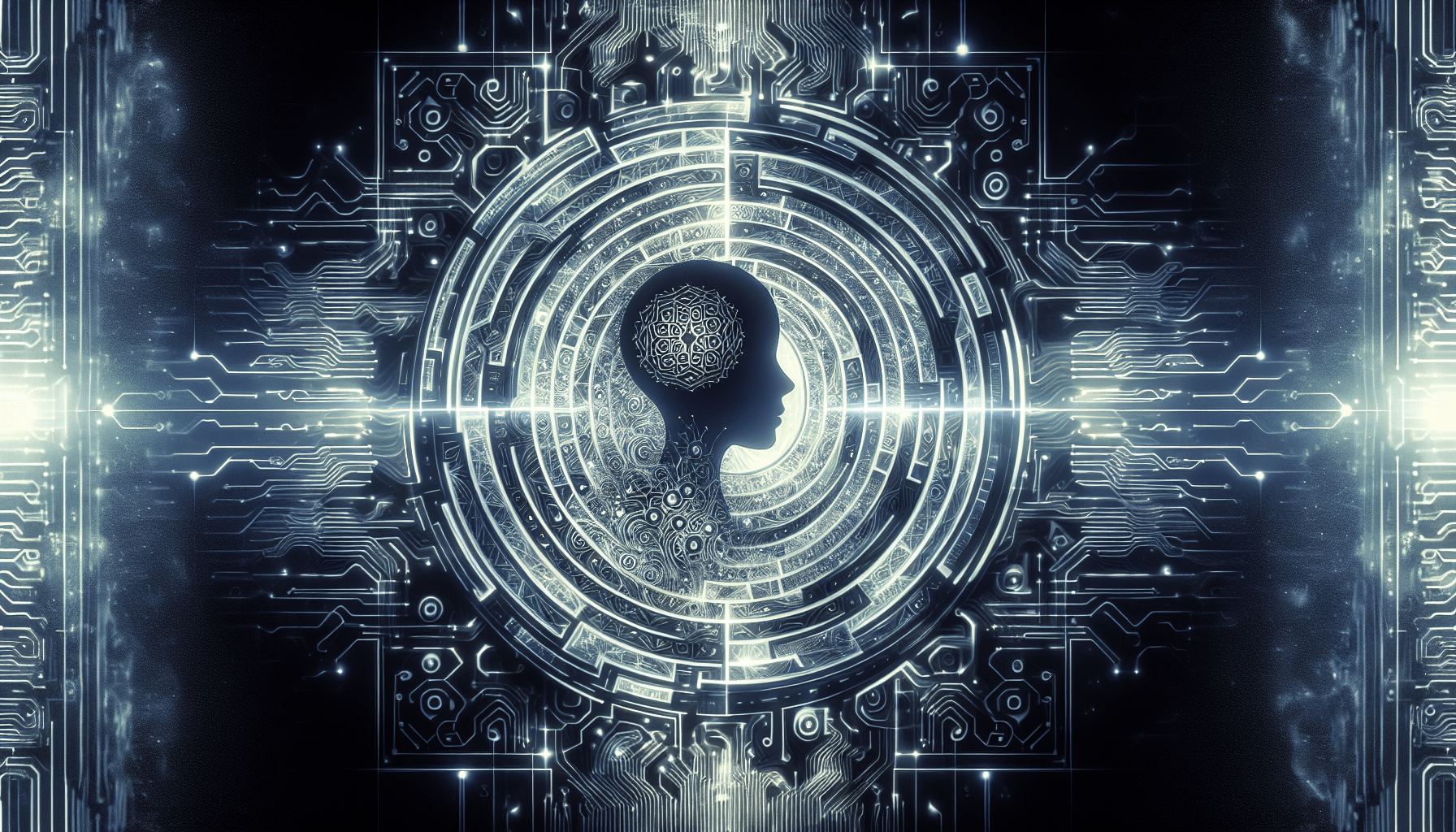Today, we’re going to explore the fascinating world of AI and uncover the four essential components that make up an AI system. From understanding the basics of artificial intelligence to deciphering how machine learning and deep learning play a role, this article will provide you with a comprehensive overview of the key elements that bring AI to life. So, sit back, relax, and get ready to embark on a journey of discovery. Let’s dive into the realm of AI systems and unlock the secrets behind their success.

Data
Data is a crucial component of any AI system. It serves as the foundation for training and testing various algorithms. There are three main types of data that are typically utilized in AI systems: training data, testing data, and validation data.
Training Data
Training data is the dataset that is used to train the AI system. It consists of input data and corresponding output data, which is used to guide the learning process. This data is carefully curated and labeled, ensuring that it accurately represents the problem at hand. The AI system learns from this dataset and adjusts its parameters and hyperparameters to optimize its performance.
Testing Data
Testing data is a separate dataset that is used to evaluate the performance of the AI system after it has been trained. Unlike the training data, the testing data is not used to update the parameters of the system. It serves as an unbiased measure of the system’s capabilities and helps determine its accuracy, precision, and other performance metrics.
Validation Data
Validation data acts as an intermediate between the training and testing data. It is used to fine-tune the AI system’s hyperparameters during the training process. By evaluating the system’s performance on the validation data, adjustments can be made to optimize its performance and prevent overfitting. Validation data helps ensure that the AI system is generalizing well and not simply memorizing patterns from the training data.
Algorithms
Algorithms form the core of an AI system. They are the mathematical models and techniques that enable the system to learn from data and make predictions. AI systems employ various types of algorithms, each with its own unique approach and characteristics. The three main categories of algorithms used in AI systems are supervised learning algorithms, unsupervised learning algorithms, and reinforcement learning algorithms.
Supervised Learning Algorithms
Supervised learning algorithms are trained using labeled data. They learn from input-output pairs and aim to predict the correct output for unseen inputs. These algorithms can be used for classification, where the output is a discrete class label, or regression, where the output is a continuous value. Some popular supervised learning algorithms include decision trees, random forests, support vector machines, and neural networks.
Unsupervised Learning Algorithms
Unsupervised learning algorithms are trained using unlabeled data. They aim to discover hidden patterns or structures within the data. Unlike supervised learning, these algorithms do not have explicit output labels to guide the learning process. Instead, they rely on their ability to identify similarities, differences, and associations within the data. Clustering, dimensionality reduction, and generative models are common examples of unsupervised learning algorithms.
Reinforcement Learning Algorithms
Reinforcement learning algorithms learn through trial and error interactions with an environment. These algorithms are designed to maximize a reward signal by selecting actions that lead to desirable outcomes. The system learns from feedback received in the form of positive or negative rewards, allowing it to improve its decision-making abilities over time. Reinforcement learning algorithms have been successfully applied in various domains, including game playing, robotics, and resource allocation.
Compute Power
Compute power is a critical aspect of AI systems, as it affects the performance and efficiency of the algorithms. Different types of hardware components can be utilized to provide the necessary computational resources.
Central Processing Unit (CPU)
A Central Processing Unit (CPU) is the primary component in a computer system that executes instructions and performs calculations. CPUs are well-suited for general-purpose computing tasks and can handle a wide range of algorithms. They are essential for running AI systems that do not have high computational demands or require parallel processing.
Graphics Processing Unit (GPU)
Graphics Processing Units (GPUs) are specialized hardware designed for high-performance graphics rendering. However, they have also proven to be highly effective in accelerating certain AI computations. GPUs excel at parallel processing, making them well-suited for training and running deep neural networks, which often involve intensive matrix operations. By leveraging the massive parallelism offered by GPUs, AI systems can achieve significant performance improvements.
Field-Programmable Gate Array (FPGA)
Field-Programmable Gate Arrays (FPGAs) provide hardware reconfigurability, allowing for customized and efficient implementations of specific algorithms. FPGAs can be programmed to perform specific computations in hardware, which can offer significant speedup compared to software-based implementations. Their flexible nature makes them suitable for AI systems with specialized computational requirements.
Application-Specific Integrated Circuit (ASIC)
Application-Specific Integrated Circuits (ASICs) are highly optimized hardware designed specifically for a particular application or algorithm. ASICs offer unparalleled speed and power efficiency, making them ideal for running AI systems that demand high performance and low latency. These specialized chips are typically custom-designed, ensuring maximum efficiency for the specific computational requirements of the AI system.
Model
The model is a central component of an AI system, representing the learned representation of the problem at hand. It encapsulates the knowledge acquired through training and serves as the basis for making predictions or decisions.
Architecture
The architecture of a model refers to its structure and organization. It defines how the input data flows through the model’s layers or components and how the output is generated. The architecture can vary depending on the type of algorithm and problem being addressed. For example, a neural network model may consist of multiple layers of interconnected nodes, while a decision tree model consists of a hierarchical structure of nodes.
Parameters
Parameters are the internal variables of a model that are learned during the training process. They capture the relationships and patterns within the data and allow the model to make predictions. The values of these parameters are updated iteratively during training to minimize the difference between the model’s predictions and the actual output. The specific number and nature of parameters depend on the chosen algorithm and model architecture.
Hyperparameters
Hyperparameters are external configuration settings that are set before training the model. Unlike parameters, hyperparameters are not learned from the data but rather selected based on prior knowledge, experience, or experimentation. Examples of hyperparameters include learning rate, regularization strength, and network architecture choices. Finding optimal hyperparameter values is crucial to achieving good model performance and generalization. It often involves a process of trial and error and requires careful tuning.
In conclusion, the four components of an AI system, namely Data, Algorithms, Compute Power, and Model, are integral to the successful development and deployment of AI solutions. These components work synergistically, with data providing the foundation for learning, algorithms driving the learning process, compute power enabling efficient computations, and the model representing the acquired knowledge. Understanding and optimizing each component contributes to the effectiveness and performance of AI systems, making them valuable tools across various domains and applications.

